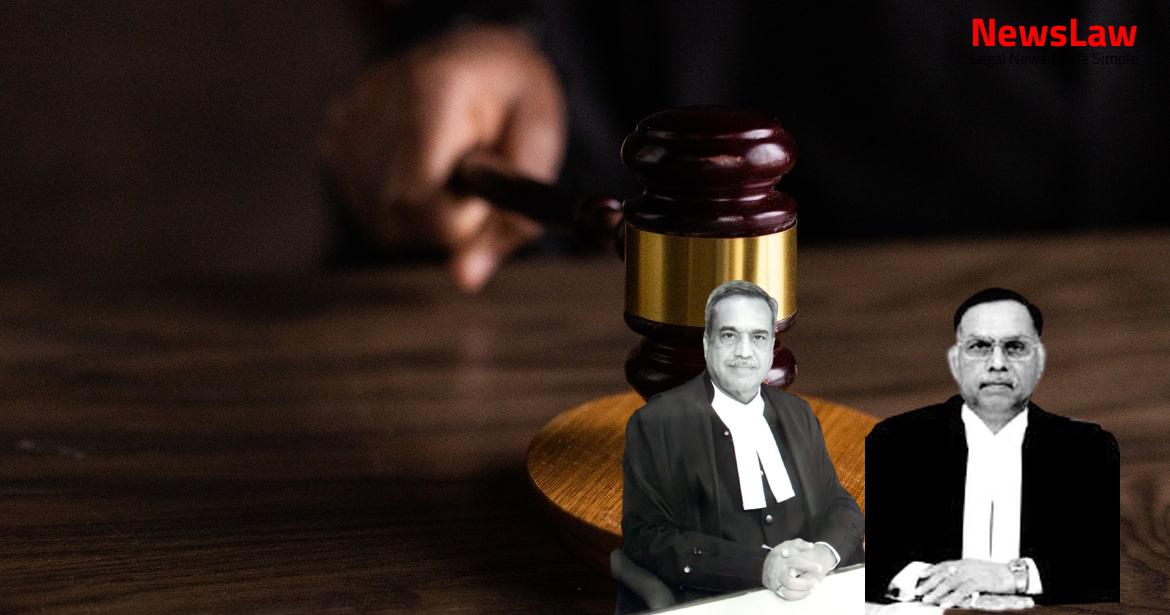In a significant legal battle, the Supreme Court of India has rendered a crucial judgment in the case of Ravinder v. State of India. The case delves into the complex issue of culpable homicide amounting to murder, resulting from a tragic altercation that led to the death of an individual. This summary sheds light on the decisive proceedings and the final verdict that upholds justice in the face of adversity.
Facts
- Anoop Kumar’s brother and father arrived at the scene during the incident.
- Charge-sheet filed against all four accused persons, including one of the respondents.
- Initial case under Sections 307, 504, 506/34 IPC later converted to Section 302 IPC after victim’s death.
- Respondent No. 2 (original accused no. 1) appealed the conviction order before the High Court.
- Accused persons were instructed to leave by Anoop Kumar’s family.
- Vishnu Kumar, Rakesh Kumar, and Sudhir @ Ramaudh encouraged firing at the deceased.
- Ravinder fired at the complainant’s mother with a country-made pistol.
- Complainant took his injured mother to the police station and lodged an FIR.
- Three accused persons were acquitted by the Trial Court.
- Quarrel and confrontation occurred between the accused and the complainant’s mother during the incident.
- The High Court modified the conviction from Section 302 IPC to Section 304 Part I IPC for Ravinder
- Ravinder was sentenced to 10 years of rigorous imprisonment and a fine of 20,000/-
- The modification in the conviction led to the original complainant filing an appeal
Also Read: Dispensation with Personal Appearance in Criminal Case: Landmark Judgement by Supreme Court of India
Arguments
- The original complainant’s Advocate argues that the accused coming with a firearm after an altercation and firing at the deceased from close range falls under Section 300 IPC, not Exception 4.
- Citing the State of Madhya Pradesh v. Shivshankar case, it is argued that mutual provocation and blows from both sides are necessary for Exception 4 to apply.
- Since there was no blow from the complainant’s side or the deceased, the Advocate asserts the case should not be under Exception 4 to Section 300 IPC.
- The High Court’s conversion of the conviction to Section 304 Part I IPC is heavily contested as it is believed the case falls under Clause fourthly to Section 300 IPC, making it culpable homicide amounting to murder.
- The accused’s Advocate contends that the High Court’s decision was justified as the crime was not planned and happened in the heat of the moment, and therefore, a lower charge is appropriate.
- The learned Advocate representing the respondent argues that Exception 4 to Section 300 IPC is applicable in this case, justifying the conversion of conviction from Section 302 IPC to Section 304 Part I IPC.
- The learned Advocate highlights that the Trial Court acquitted three other accused individuals, noting the absence of pre-planning or prior intention to commit the murder when Lajjawati went to complain to Ravinder.
- The unchallenged finding of the Trial Court supports the application of Exception 4 to Section 300 IPC, further substantiating the conversion of the conviction as done by the High Court.
Also Read: The Jodha Ram vs. Kaushaliya Dispute: Supreme Court Judgement Summary
Analysis
- The High Court erred in converting the conviction from Section 302 IPC to Section 304 Part I IPC based on the grounds that it was not a planned crime and there was no prior intention.
- The incident where the deceased was shot by Ravinder (accused No. 1) from close range did not involve further grave and sudden provocation.
- The accused had used abusive language which led to the altercation, and the accused specifically mentioned not having fear due to a previous conviction.
- Exception 4 to Section 300 IPC is only applicable in cases of fights or quarrels that involve mutual provocation and blows exchanged by both sides.
- Intention to cause death is inferred in cases of intentional firing, unless falling under any exceptions.
- The appellant in this case did not cause any injury to the deceased or his companions.
- The deceased, who was unarmed, suffered three fatal injuries inflicted by the appellant using an axe.
- As the appellant used a formidable weapon on an unarmed victim and did not meet the criteria of mutual provocation, Exception 4 is not applicable in this case.
- The case falls under Clause fourthly to Section 300 IPC as the accused fired from a close range with a country-made firearm.
- The accused’s act was imminently dangerous and likely to cause death or such bodily injury as is likely to cause death.
- Observations made by the Trial Court in acquitting other accused cannot benefit the original accused who fired at the deceased from a close range.
Also Read: Contractor vs. FCI: Determination of Profit and Wage Dispute
Decision
- The judgment convicting the original accused No 1 for the offence under Section 302 IPC is restored.
- The High Court’s decision to modify the conviction to Section 304 Part I IPC is quashed and set aside.
- The original accused No 1 is ordered to surrender before the concerned Court to serve the sentence imposed by the Trial Court within three months.
Case Title: AWADHESH KUMAR Vs. THE STATE OF UTTAR PRADESH
Case Number: Crl.A. No.-001670-001670 / 2019



